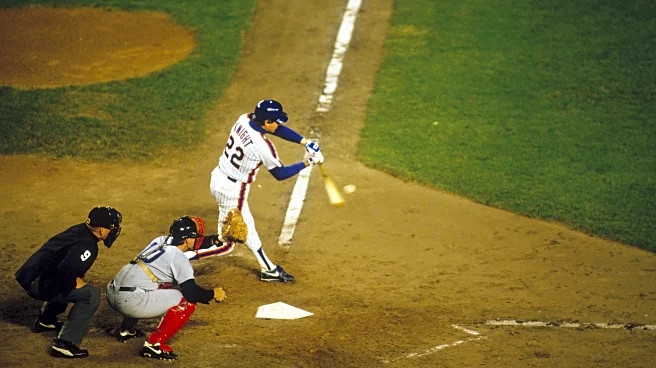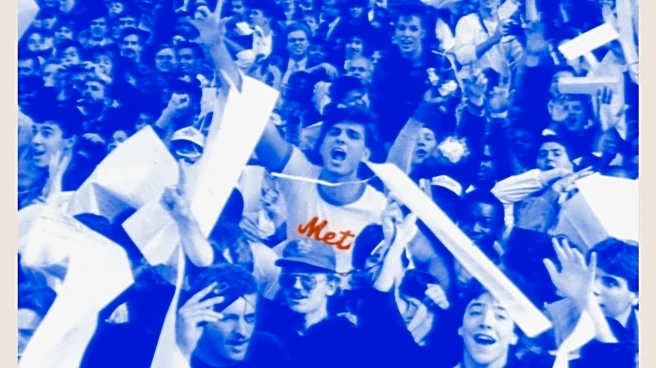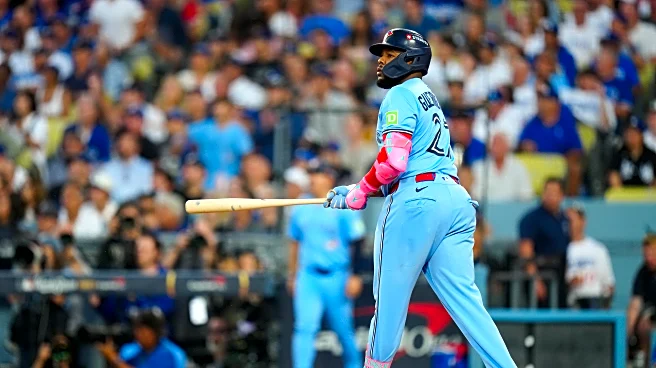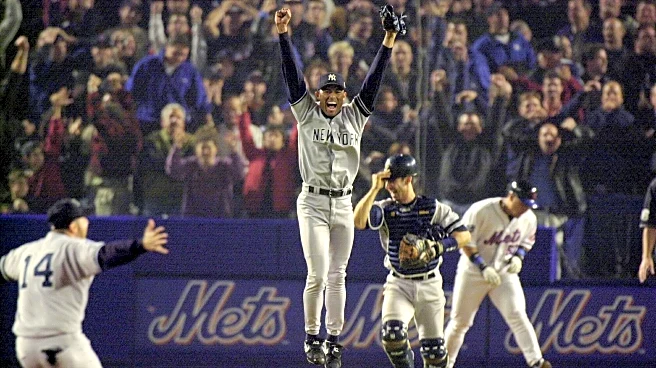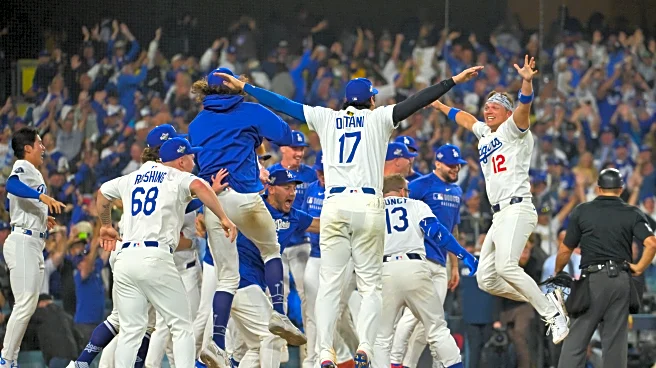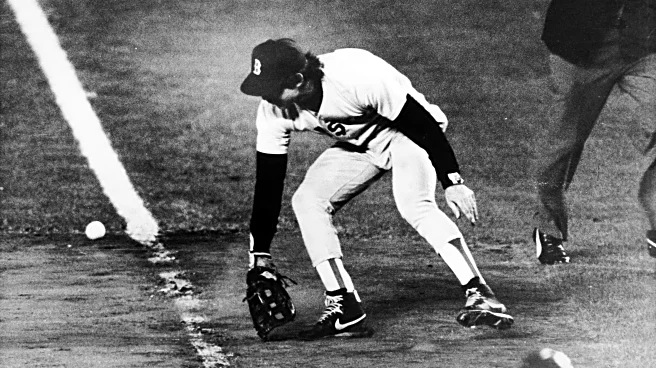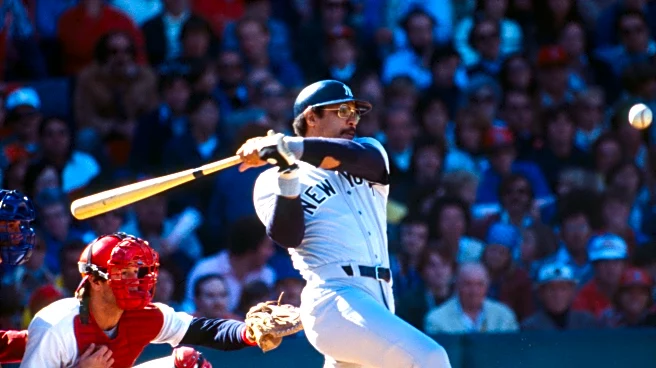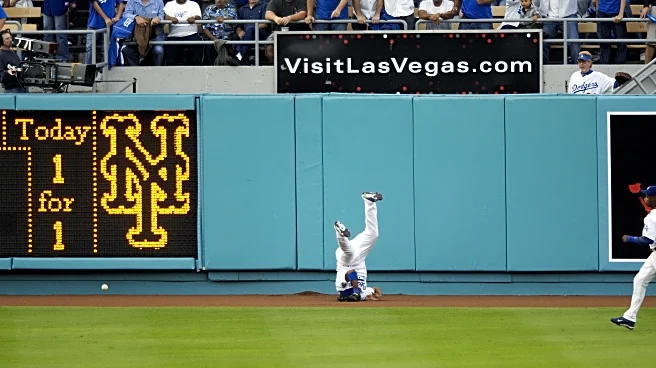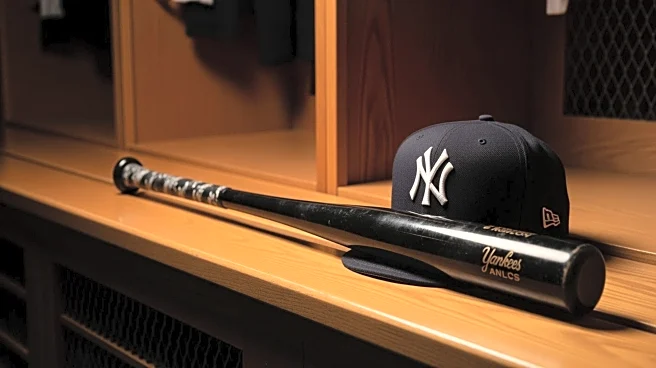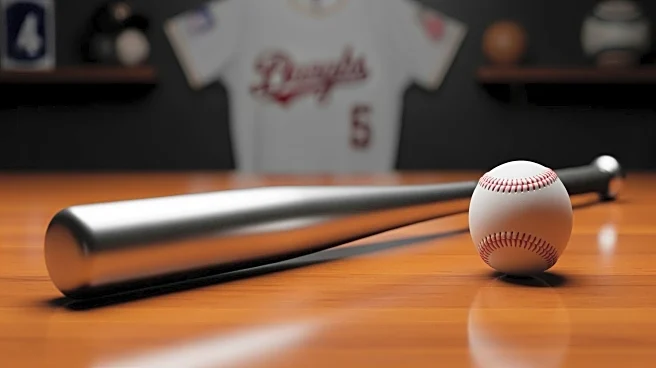Welcome to Tuesday Top Ten, a new offseason series devoted to reliving moments of magic, misery, or overlooked meaning throughout Mets history. Rankings might cover specific players, teams, games, catches,
home runs, uniforms, etc. — with the necessary disclaimer that comparing circumstances across 64 years is an impossibly imperfect science and an inherently subjective exercise. The purpose of these articles isn’t to generate definitive conclusions or spark mean-spirited debate, but to celebrate the passion and heartbreak which brings generations of fans together, from the Polo Grounds to Shea to Citi.
With the 2025 World Series in full swing, this inaugural article highlights the Mets who came through during the team’s five trips to the World Series in 1969, 1973, 1986, 2000, and 2015. An important caveat: this list is devoted to showcasing players who exceeded expectations on baseball’s biggest stage, so you won’t find Tom Seaver, Mike Piazza, or Gary Carter on this list, even though each performed up to their Hall of Fame standards (Seaver with a 2.70 ERA in four World Series starts, Piazza with four extra-base hits in five games, and Carter with 9 RBI) during the Fall Classic. With all that out of the way, let’s count down this Tuesday’s Top Ten…
HONORABLE MENTIONS
Michael Conforto (2015) At 22 years old, Conforto was the third-youngest player with a multi-homer game in World Series history.
Matt Harvey (2015) If Terry Collins removed him one inning earlier, Harvey would have been the first pitcher since Curt Schilling in 1993 to throw eight scoreless innings in a World Series elimination game.
Jesse Orosco (1986) Orosco made four scintillating appearances, allowing just two hits and no runs across 5.2 innings of work (including two perfect innings to save Game 7).
Jay Payton (2000) The rookie Payton was one of only two players ever to homer off Mariano Rivera in the postseason.
THE LIST
10. Gary Gentry (1969)
As the legend goes, two miracles occurred in 1969: man walked on the moon, and the Mets won the World Series. The first required an Armstrong, and the second required the strong arms of Seaver, Koosman, and Gentry. The somewhat forgotten third pillar of the Mets’ elite rotation, 22-year-old rookie Gary Gentry pitched to a 2.19 ERA in his final eight starts of the season and helped propel the franchise to a surprise division title.
After struggling in the final game of the NLCS against the Braves, Gentry had a legendary performance in the first World Series game at Shea Stadium. On the mound, he threw 6.2 scoreless innings, and was bailed out of a bases loaded jam in the seventh by young fireballer Nolan Ryan. At the plate, Gentry — who put up a meager .081 batting average during the regular season — had the Mets’ biggest hit of the afternoon, delivering a two-run double in the bottom of the second. Gentry was the seventh player in World Series history to throw at least 6.2 IP, allow 0 ER, and record 2 RBI himself. No one since Gentry has accomplished the feat, though Shohei Ohtani has a chance to threaten that distinction this week.
9. Rusty Staub (1973)
Rusty Staub put on an offensive clinic in the 1973 World Series. Over the seven-game series, Staub recorded 11 hits and 6 RBI, stats which are especially impressive considering he didn’t even make a plate appearance in Game 1.
It was Game 4 at Shea when Staub completely took over, going 4-for-4 with 5 RBI and hitting one of only two three-run homers by a Met in any World Series (the other was hit by Jay Payton in 2000). Staub notched at least one base hit in each of the final six games, including an RBI double when things were already looking bleak late in Game 7. Staub’s second stint in New York lasted from 1981 to 1985, meaning he just barely missed being part of the 1986 team and retired with 1973 as the sole World Series appearance of his 23-year major league career.
8. Ron Darling (1986)
Ron Darling wrote an entire book about the “failure and triumph” of his critical subpar start in Game 7 of the 1986 World Series. The current commentator couldn’t make it out of the fourth inning, surrendering three runs on a walk, a hit by pitch, and six hits — including a pair of back-to-back home runs — while striking out none.
But Darling was utterly dominant during his previous two starts of the series, tossing seven scoreless innings in Game 1 and Game 4. There have been only three scoreless starts of at least 7 IP in Mets World Series history, and Darling has two of them (Jon Matlack has the other). Since integration, only four pitchers have had two such starts in the same World Series: Lew Burdette in 1957, Whitey Ford in 1960, Sandy Koufax in 1965, and Darling in 1986.
7. Jerry Koosman (1969, 1973)
Overshadowed for much of his Mets career by “The Franchise,” Jerry Koosman was utterly dominant in 1969, going 17-9 with a 2.28 ERA. When the World Series came along, the 26-year-old southpaw shined, allowing two earned runs in 8.2 innings pitched in Game 2 before firing a complete game to clinch the Championship in Game 5.
Four years later, Koosman was roughed up in his first outing against Oakland, but rebounded to deliver 6.1 scoreless innings at Shea Stadium in Game 5. When all is said and done, only one player in Mets history collected more than one World Series win: Koosman, who has three. His ability to perform at his best when it mattered most is one reason (among a myriad of others) why Koosman’s number-retirement ceremony and formal recognition as one of the greatest players in franchise history was long overdue.
6. Tommie Agee (1969)
Gary Gentry wasn’t the only Met showing off on both sides of the ball in Game 3 of the 1969 World Series. In fact, Gentry’s stat line would have looked a whole lot uglier if not for the defensive wizardry of two-time Gold Glove Award winner Tommie Agee. Agee opened the scoring in Game 3 by blasting a leadoff home run to center field, depositing it just to the right of the 396 mark where he would soon make a play for the ages.
In the top of the fourth, with two men on and two out, Baltimore backstop Elrod Hendricks drove a ball the opposite way into the left-center field gap. Agee sprinted all the way to the warning track, where he caught the ball backhanded before slamming into the wall, hanging on as it nearly popped out of his glove. But Agee wasn’t done yet. With the bases loaded and two outs in the top of the seventh, Paul Blair hit a long fly ball off Nolan Ryan. Agee ranged this time to right-center field, diving to make the play on the edge of the warning track. As Curt Gowdy stated on the NBC broadcast, “This man has possibly saved five runs in this game.” And oh yeah, remember he hit a home run too?
5. Ron Swoboda (1969)
Tired of 1969 Mets yet? Ranking just ahead of Agee on this list is a man who played just to his left. Ron Swoboda wasn’t much of an offensive force, hitting .235 with nine home runs in 1969. He wasn’t much of a defensive force either, yet in Game 4 of the World Series, he made one of the clutchest catches in baseball history. The Mets clung to a 1-0 lead in the top of the ninth inning. The Orioles had put men on first and third base with one out. Hall of Famer Brooks Robinson was at the plate facing Tom Seaver, who was vying for a complete game. Robinson slashed a ball into the right-center gap. Swoboda bolted towards it with no time to spare, leaving his legs and stretching his arm to snag it just before it met the outfield grass. The Orioles had tied the game on a sacrifice fly, but further damage was prevented. The Mets would win on J.C. Martin’s bunt the following inning.
Swoboda’s catch is well-remembered in the pantheon of great Mets plays, but less remembered is the fact that Swoboda also went 3-for-4 out of the fifth spot in the lineup that day. It was the only three-hit performance by any Met in the 1969 World Series.
4. Curtis Granderson (2015)
Here’s a trivia question for the baseball nerds out there: who are the only players to hit three go-ahead home runs in a World Series, but have their team lose? Babe Ruth in 1926. Curtis Granderson in 2015. That’s it. That’s the list.
In Game 1, Granderson gave the Mets their first lead of the series. In Game 4, Granderson gave the Mets a lead they would not relinquish in their sole victory. In Game 5, Granderson hit a leadoff homer to give ace Matt Harvey a slim lead that would hold until the ninth inning. For all the fanfare rightfully directed towards Yoenis Céspedes for his second-half explosion, Daniel Murphy for his six-game homer streak, and David Wright for his emotional heroics, it’s Granderson who actually led the 2015 Mets in RBI during the postseason (12) and consistently came through with the lights at their brightest during the Fall Classic.
3. Ray Knight (1986)
Through the first five games of the 1986 World Series, Ray Knight was hitting .266. Why, then, did he receive the title of World Series MVP? Across Games 6 and 7, Knight reached base in six of his nine plate appearances, driving in three runs and scoring four times. Most notably, he was the man who crossed the plate on Mookie Wilson’s infamous dribbler to end Game 6 and he clubbed a game-tying homer in the bottom of the seventh inning of Game 7.
At 33 years old, Knight wasn’t the Mets’ best player in 1986, ranking twelfth on the team with 2.4 WAR. But as a true MVP does, he led the way when it mattered most. For all the future Hall of Famers and supersonic personalities that filled the Mets’ clubhouse that season, it was Knight who ultimately put the Red Sox in checkmate.
2. Donn Clendenon (1969)
1969 World Series MVP Donn Clendenon wasn’t just the Mets’ best bat in that year’s Fall Classic; he put up some of the most impressive offensive numbers in any World Series. Playing in only four of five games, Clendenon clubbed three crucial homers, acting as a sparkplug by putting the Mets on the board in Game 2, Game 4, and Game 5. His 1.071 SLG during the World Series is a mark which only 12 players have bested (with a minimum of 15 PA).
Traded from Montreal to New York in exchange for a quintet of players on June 15, Clendenon became one of the most impactful midseason acquisitions in franchise history, providing much-needed thump in a relatively tame lineup. Clendenon holds the distinction of being the first player to win World Series MVP on a team they were traded to during the season, with only Steve Pearce (2018 Red Sox) and Jorge Soler (2021 Braves) having accomplished the obscure feat since.
1. Al Weis (1969)
Al Weis had a career batting average of .219. He had a career OPS of .553. He had a career bWAR of 2.3. Yet over five games in the 1969 World Series, Weis hit .455 with a 1.290 OPS. The 31-year-old’s biggest moments both came against left-handed 20-game-winner Dave McNally. In Game 2, Weis broke a 1-1 tie with an RBI single in the top of the ninth inning, and in Game 5, Weis hit a game-tying homer in the bottom of the seventh inning.
Just how clutch were Weis’s contributions? Championship Win Probability Added (cWPA) is a statistic which measures the value of individual plays on a team’s likelihood to win a World Series. In the 1969 World Series, Weis was responsible for plays which combined for 20.33% cWPA — more than any Mets pitcher recorded, and more than double what any other Mets batter mustered. While Clendenon was certainly a deserving World Series MVP, it’s Weis who was arguably the Mets’ most valuable bat during that five-game series. Combined with his status as a backup middle-infielder and lowly career numbers, Weis is the definition of a World Series legend, and one of the many miraculous stories of the Miracle Mets.
Have a top ten list you want to see featured on this series? Comment with your category below!
